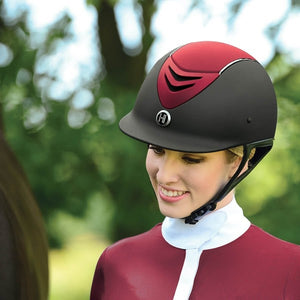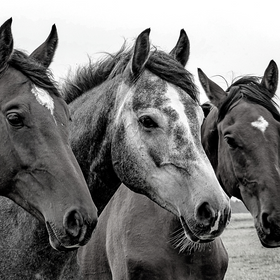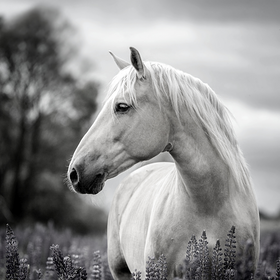
5 Tips for a Better Saddle Fit
A correct saddle fit is essential for any horse in any discipline. A well-fitting saddle allows the horse to move freely without any restrictions. It can also help the rider’s position and allow for more effective aids. A poorly fitted saddle can affect a horse’s movement and cause discomfort and pain. Here are some great tips for correctly fitting a saddle to your horse!
Before you place the saddle on the horse, make sure he stands squarely on level ground with his head and neck facing forward. If your horse is moving a lot, it could be helpful to have someone keep the horse still. As you try on the saddle, pay close attention to your horse. Look for signs of both discomfort and irritation as well as relaxation
1. Find the saddle balance
Start by positioning the saddle on your horse’s back. You must do this without a saddle pad because you want to see how the saddle sits directly on your horse without any modifications.
Set the saddle slightly forward on your horse’s withers to check the balance. Then slide it back until it’s sitting in a natural resting place. Do this a few times to ensure the saddle rests in the same place. The saddle is most balanced in the resting place between your horse’s shoulder blades. And a balanced saddle allows for complete freedom of movement.
2. Look at the wither clearance
It’s so important the saddle has enough clearance at the withers. A saddle that sits too low on the withers will cause pain and, in some cases, injury. Clearance for average withers should be 2-3 fingers. If your horse has mutton or high withers, this rule of thumb may not apply.
The width of the saddle tree can affect wither clearance on a saddle. The saddle tree should be wide enough for the saddle to fit correctly when the horse is moving dynamically. But if the tree is too wide, it can sit too close to the withers.
3. Check the gullet channel
The gullet channel is an important part of saddle fit. To find it, turn your saddle over. The gullet channel is the space you’ll see between the panels that run the saddle length. Its function allows room for your horse’s spine to move while being ridden.
If the gullet channel of a saddle is too narrow for your horse, it can affect his movement and cause pain because of pressure on the spine. Horses with wide backs often require very wide gullets. On the other hand, horses with narrow backs or pronounced spines need a narrower gullet.
To determine your horse’s gullet width, feel along the spine and the soft tissue running along it. The gullet channel should clear this area, so the panels rest on your horse’s long back muscles.
4. Check the panel contact
How the saddle panels sit on your horse’s back is an important part of saddle fit. The panel should touch the horse’s back evenly from front to back. However, keep in mind that some panels may be designed to come up on the back end to allow the horse’s back to come up while engaging the hind end.
To check the saddle panel contact, make sure the saddle is resting in a balanced position on your horse’s back. Run your finger along the panel on each side. Does it feel like it’s making even contact with the back from the front to back? If you feel any gaps, the saddle may need to be adjusted.
5. Determine the saddle tree angle
To determine if the tree angle on your saddle is correct for your horse, be sure that the saddle is balanced on your horse’s back. In this position, look at the angle of the piping on the saddle. Does it match the angle of your horse’s shoulder? If so, the saddle tree angle is correctly adjusted. If not, you should consider having the saddle adjusted.
If the tree angle is too broad, it may clear the top of your horse’s withers, but the saddle will pinch the sides of his withers. The saddle will pinch the horse’s shoulder and restrict movement if it is too narrow.
Correctly fitting a saddle to your horse may seem overwhelming initially, but it doesn’t have to be! With these five tips for a better saddle fit, you and your horse will be happier than ever!





